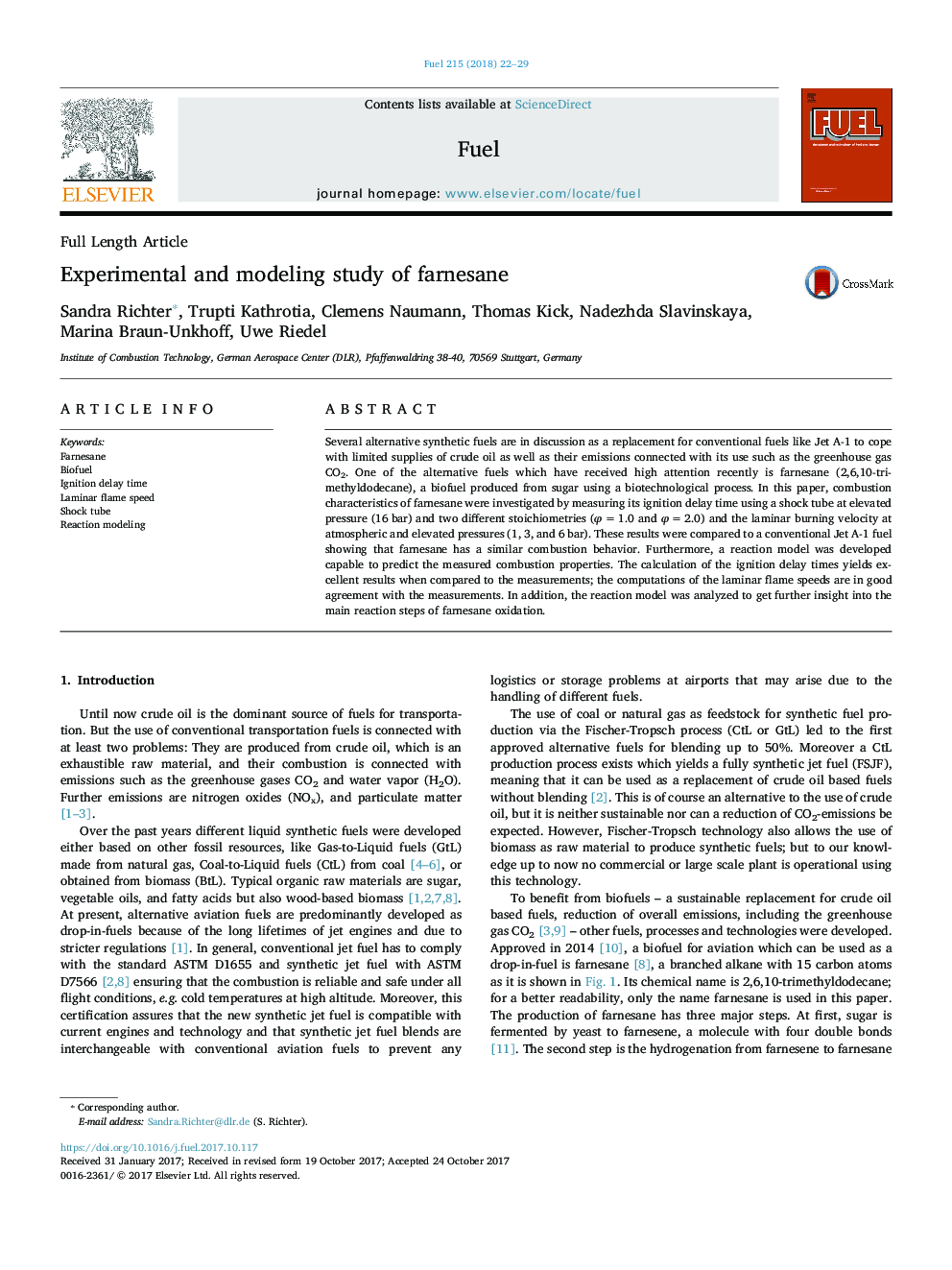| Article ID | Journal | Published Year | Pages | File Type |
|---|---|---|---|---|
| 6632233 | Fuel | 2018 | 8 Pages |
Abstract
Several alternative synthetic fuels are in discussion as a replacement for conventional fuels like Jet A-1 to cope with limited supplies of crude oil as well as their emissions connected with its use such as the greenhouse gas CO2. One of the alternative fuels which have received high attention recently is farnesane (2,6,10-trimethyldodecane), a biofuel produced from sugar using a biotechnological process. In this paper, combustion characteristics of farnesane were investigated by measuring its ignition delay time using a shock tube at elevated pressure (16 bar) and two different stoichiometries (Ïâ¯=â¯1.0 and Ïâ¯=â¯2.0) and the laminar burning velocity at atmospheric and elevated pressures (1, 3, and 6â¯bar). These results were compared to a conventional Jet A-1 fuel showing that farnesane has a similar combustion behavior. Furthermore, a reaction model was developed capable to predict the measured combustion properties. The calculation of the ignition delay times yields excellent results when compared to the measurements; the computations of the laminar flame speeds are in good agreement with the measurements. In addition, the reaction model was analyzed to get further insight into the main reaction steps of farnesane oxidation.
Related Topics
Physical Sciences and Engineering
Chemical Engineering
Chemical Engineering (General)
Authors
Sandra Richter, Trupti Kathrotia, Clemens Naumann, Thomas Kick, Nadezhda Slavinskaya, Marina Braun-Unkhoff, Uwe Riedel,
